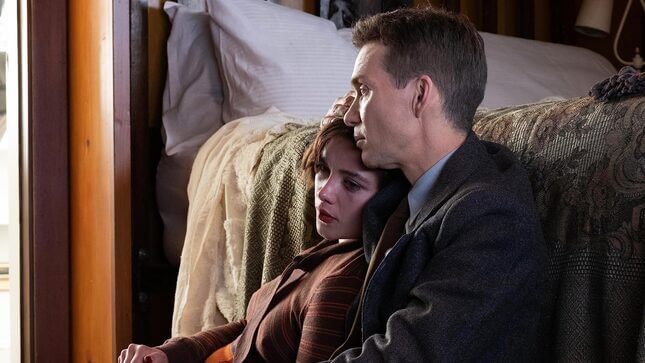Don’t Get Too Excited About the ‘Oppenheimer’ Nudity
We were promised "prolonged full nudity" from Cillian Murphy and Florence Pugh, but that's not quite what we're getting.
EntertainmentMovies

According to a report that originated with The Guardian and eventually made its way to the New York Post, Christopher Nolan’s Oppenheimer “features prolonged nudity for [Cillian] Murphy and Florence Pugh.” Notably, the Guardian writer, Charlotte Edwardes, states in the piece that she was “not allowed” to screen the film before writing her feature, which includes interviews with Murphy and Nolan. Well, I did see it before writing this, and I can confirm that it does not feature “prolonged nudity for [Cillian] Murphy and Florence Pugh”—at least, not in a particularly revealing way.
Murphy plays J. Robert Oppenheimer, “the father of the atomic bomb,” and Pugh is Jean Tatlock, the doctor with whom Oppenheimer was romantically involved both before and after his marriage to Kitty Harrison in 1940. We see Oppenheimer and Tatlock meet at a Communist Party USA soiree and engage in some banter that’s extremely Old Hollywood in its zippiness and innuendo:
Tatlock: …You sound uncommitted.
Oppenheimer: I’m committed to thinking freely about how to improve our world. Why limit yourself to one dogma?
Tatlock: You’re a physicist. You pick and choose rules? Or do you use the discipline to channel your energies into progress?
Oppenheimer: I like a little wiggle room. Do you always tow the party line?
Tatlock: I like my wiggle room too.
Cut to fucking. They’re nude, but the only naughty bits exposed are Pugh’s boobs as she rides Murphy, cowgirl style. They break, chat, and his amazing mind is exposed when he reads Sanskrit from a book (her request) as she resumes riding him. Later in the movie, after Oppenheimer is married to Harrison (Emily Blunt), he meets with Tatlock and they have more sex and then a conversation. They’re seated in chairs across from each other to chat, and the implication is that they’re fully nude, though both have their legs rather severely crossed so that no genitalia is exposed. Who knows what’s going on in those creases, in fact. This scene is, on one hand, “prolonged,” but on the other, not quite the nudity we were promised, as they’re mostly covered (albeit by their own nude bodies).
-

-

-

-

-

-

-

-

-

-

-

-

-

-

-

-

-

-

-

-

-

-

-

-

-

-

-

-

-

-

-

-

-

-

-

-

-

-

-

-








































